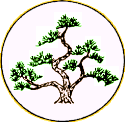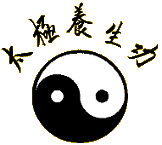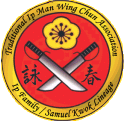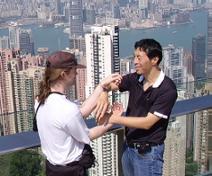

|
Home |
| Zhan Zhuang |
| Tai Chi |
| Wing Chun |
| Health Benefits |
| Classes |
| Conduct |
| Learning |
| FAQ's |
| Private Tuition |
| Lineage |
| News / Events |
| Workshops |
| China Trips |
| Photo Gallery |
| Contact |
| Links |
| Final Word |
| This section is designed to answer a simple question... | |||||||||||||||||||||||
What will I learn in the classes? | |||||||||||||||||||||||
Simply click on the text beneath the arrows to learn about a particular aspect of training. |
|||||||||||||||||||||||
| Zhan Zhuang | Tai Chi | Wing Chun |
|||||||||||||||||||||
 |  |  |
|||||||||||||||||||||
 |  |  |  |  |  |  |  |
||||||||||||||||
 |  |  |  | ||||||||||||||||||||
| Stand like a Tree | Ba Duan Jin | Shi Li | Walking Chi Kung | Forms | Drills | Pad Work | Weapon Training | ||||||||||||||||
| Tao Yin | Golden Ball Tai Chi | Small Circle Form | Work with a Partner | ||||||||||||||||||||
Please Note: Not every aspect of the training will be covered during every lesson, rather what is listed here is intended to give some idea of the variety of the training involved with each class. | |||||||||||||||||||||||
Standing Like a Tree This is the Zhan Zhuang itself: the 'Standing Post' exercises for cultivating the body's internal energy. This involves holding a variety of postures (sometimes seated or lying down) while trying to relax into them (normally for just a few minutes for a beginner). The results are greatly heightened energy levels and improved powers of recovery. There are postures that relate to the Five Elements of Chinese medical theory (therefore benefitting particular internal organs) as well as more martially orientated ones that are useful for increasing our energy reserves even further. |
|||||||||||||||||||||||
Return to the menu |
|||||||||||||||||||||||
Ba Duan Jin Sometimes called the 'Eight Fine Treasures' or the 'Eight Pieces of Brocade'. This set of eight simple exercises is designed to stretch the body both inside and out. Practiced regularly, this is a very effective means of removing simple energy blockages within the body. These exercises were said to be employed by the famous 12th century Chinese General Yeuh Fei to train his army. History records his army as never having been defeated in battle. There are several different versions of this exercise set, the version you can learn here is specifically for health and to compliment the standing training. |
|||||||||||||||||||||||
Return to the menu |
|||||||||||||||||||||||
Shi Li These are the 'Power Testing' exercises where we begin to express the energy developed in our standing postures. Unlike the standing postures, Shi Li exercises require movement. The two are extremely complementary as the standing powers the effectiveness of the shi li, which in turn helps to prevent stagnation from maintaining stationary postures. Shi Li exercises help to strengthen the movement of the energy through our bodies and teach us to begin to use this energy in our daily life. |
|||||||||||||||||||||||
Return to the menu |
|||||||||||||||||||||||
Walking Chi Kung We've all heard how walking is good for us - learn how to maximise those benefits with several traditional styles of Chi Kung Walking. Sometimes careful and slow, sometimes deliberate and brisk, there are various walking styles from the martial arts and medical traditions of China. All of them can be beneficial to your health. Some of the steps you can learn are part of the training involved in Da Cheng Chuan, the martial art from which we take our standing postures. |
|||||||||||||||||||||||
Return to the menu |
|||||||||||||||||||||||
Tao Yin Tao Yin (sometimes called 'Do In') is a method of exercise to lead energy through the body. Many of these exercises appear to be simple stretching movements, often coordinated with the breath. Such simplicity however, belies the tremendous healing potential of such movements when performed regularly. As well as providing us with some excellent warm-up exercises, Master Lam has incorporated some of his understanding of Tao Yin into our Tai Chi form (sequence of movements). |
|||||||||||||||||||||||
Return to the menu |
|||||||||||||||||||||||
Golden Ball Tai Chi Gentle exercises to wake up the body's energy. Energising and refreshing, Golden Ball Tai Chi requires little mobility and yet can be beneficial to people of all ages and ability levels. Especially good for dealing with negative emotions and stress. This training can greatly enhance your practice of the Small Circle Form and help you to sense and develop the energy inherent within Tai Chi. |
|||||||||||||||||||||||
Return to the menu |
|||||||||||||||||||||||
Small Circle Form This is the sequence of movements that most people would recognise as the 'Tai Chi Form'. Master Lam developed this form to incorporate not only his extensive training in Tai Chi but also his many years of study in the healing arts of Tao Yin and Zhan Zhuang. This is the shortest form to be recognised as 'Lam Style' Tai Chi (being named after it's creator). As it's name suggests, this is a relatively short sequence of movements when compared to other styles of Tai Chi, however the movements have been specially selected by Master Lam to gain as much benefit as possible from limited practice time. |
|||||||||||||||||||||||
Return to the menu |
|||||||||||||||||||||||
Working with a Partner Training your sensitivity and relaxation. Exercising in co-operation with a partner can be extremely useful. We learn to feel pressure and to relax into it: to neutralise it rather than fighting against it. The development of this skill can enhance relaxation enormously, benefiting our balance and co-ordination. This training includes, but is not limited to, the skill of 'pushing hands' - the redirection and manipulation of incoming pressure to work for us rather than against us. |
|||||||||||||||||||||||
Return to the menu |
|||||||||||||||||||||||
Unarmed Forms Training sets that can be practiced alone. Sequences of moves that train your body and mind to use your martial art instinctively. There are four unarmed forms in Wing Chun: Sil Lim Tao or the little idea, can be thought of as building the basic tools of the Wing Chun system as well as conditioning the body to be able to use them. |
 | ||||||||||||||||||||||
Chum Kiu or seeking the bridge. Having spent some time building the tools of the system we can now learn how to actively engage an opponent with them. Biu Gee or thrusting fingers, the most advanced of the barehand forms. This teaches us how to recover our position and contains some of the most devastating attacks of the entire system. Mok Jan Jhong, the wooden man or wooden dummy. Utilising a piece of training apparatus known as the wooden dummy, this form teaches us to use our techniques when in contact with an opponent. The form can however, still be practiced if the student does not have a wooden dummy available. | |||||||||||||||||||||||
Return to the menu |
|||||||||||||||||||||||
Technical Drills Here we learn to test out our techniques with, or without, a training partner. There are many different drills that can be practied, often exploring many different ways of employing the same technique. Perhaps the most famous of these methods is the Chi Sau or sticking hands training. |
|||||||||||||||||||||||
| Chi Sau begins as a predicable sequence of moves before eventually becoming free and instinctive. this is how we learn to control an opponent rather than simply trade punches with them. Having achieved some confidence in the use of basic drills and chi sau, students can then begin to learn to sparr; an essential form of preparation for a real fight. |  | ||||||||||||||||||||||
Return to the menu |
|||||||||||||||||||||||
Pad Work If you want to learn to fight then sooner or later you're going to have to hit something. Training with pads enables us to hit something more substantial than just thin air. It begins to condition our hands and bodies to receive impact and also prepare us psychologically to deal with both hitting and being hit. Some also go on to train with wall bags or even to practice 'Iron Palm' (a special form of conditioning for the hands). Care needs to be taken here however, as many people have damaged their hands and even their internal organs due to over zealous practice or insufficient understanding of this type of training. |
|||||||||||||||||||||||
Return to the menu |
|||||||||||||||||||||||
Weapons Training Wing Chun includes the use of two types of weapons: the long Pole and the large Butterfly Knives. If you're a beginner, then don't expect to learn to use these weapons anytime soon. Weapons training requires a good understanding of Wing Chun techniques in order for it to be effective. The Six and a Half Point Pole is a long range weapon and its use can be trained with a simple yet physically demanding form. This is usually the first weapon that is taught and requires the training of the traditional horse and cat stances. The Eight Ways Cutting Knives are trained with a much longer and more intricate form than is the case with the pole and so are usually taught much later. Each of the weapons forms contains elements that may be employed in unarmed combat. |
|||||||||||||||||||||||
Return to the menu |
|||||||||||||||||||||||
© Steven Williams 2007-2017
The copyright of the logos at the top left, and top right, of the screen
belong to the Lam Association and to the Samuel Kwok Martial Arts Association respectively.